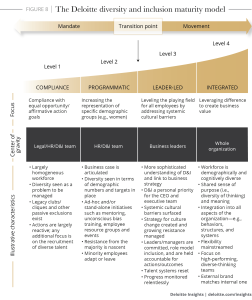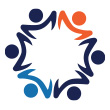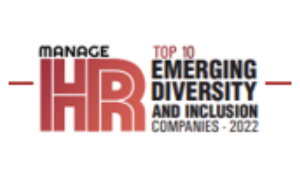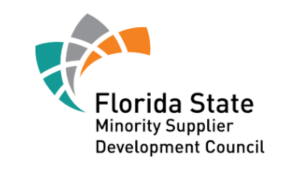This time of year is always an emotional and exciting time of the year for me. The anticipation and arrival of the New Year a month ago, celebrating Martin Luther King Day on January 15th, and welcoming Black History Month, the annual celebration of achievements by African Americans and a time for recognizing our significant role in U.S. history. As a Black woman-owned business, the Inclusive Leaders Group leadership team is inspired and especially motivated during this celebratory season so important to Black Americans and those people around the world passionately committed to diversity, equity, inclusion, and racial equity.
During a virtual Martin Luther King Day celebration event a couple of weeks ago I exchanged chat messages with a VP of HR of a national non-profit organization with 5,000 employees without a formal Diversity and Inclusion strategy but thinking about finally starting one after two years of thoughtful consideration. We conducted a follow up Zoom chat to discuss her goals and challenges with “getting unstuck”…the business case for D&I had already been made in 2020, but the pandemic, virtual workforce transition, and Great Resignation workforce disruption had gotten in the way with proceeding on their D&I journey. For employers just getting started with D&I or DEI, it can feel complicated and frustrating. HR leaders new to D&I are often unsure what to do first and who should be involved. Many start out with an unconscious bias training event or start an Employee Resource Group (ERG) because they want to do something, but without a strategy aligned with the company’s business goals, these initiatives are insufficient and rarely effective for sustainable impact.
Diversity and Inclusion (D&I) Maturity Models: What does the path to an inclusive culture look like?
Diversity and Inclusion (D&I) Maturity Models are evidence-based designed to create an understanding of an organization’s level of maturity and the impact that moving up in maturity level can have on the business. In collaborating with client organizations I find D&I Maturity Models helpful at the beginning to enable the client to understand “where they are on their D&I Journey,” and “where they want to go,” and how soon they want to get there.” I will describe specific D&I Maturity Models in a minute, but first I want us to focus on what the desirable characteristics are for an organization moving from being an “equal opportunity employer” to an “inclusive organization” and the steps along the way.
Inclusive Organizations Are:
- Six times more likely to be innovative
- Six times more likely to anticipate change and respond effectively
- Twice as likely to meet or exceed financial targets
- More attractive employers to top talent Millennials and Gen Zers
Despite the demonstrated benefits of embracing an inclusive culture, extensive research indicates that only 12 percent of organizations around the world have reached full maturity. To begin to achieve maturity, organizations should talk about and take actions involving diversity, equity, and inclusion as a critical component of the organization’s business strategy through both formal communications and reporting relationships, according to the research. This diversity and inclusion maturity model shows that the most effective way to achieve significant gains is through leadership ownership, strategic measurement, and a culture of accountability for inclusion that is driven from top to bottom.
There are two D&I Maturity Models I use in my client consultations, the PwC D&I Maturity Model and the Deloitte D&I Maturity Model. Sometimes I present both models and allow the client to choose the one they prefer. Both models are valid and reliable and backed by extensive research. In this post I will be referring to the Deloitte model
Deloitte D&I Maturity Model 
Inclusive Leaders Group uses the Deloitte D&I Maturity Model to benchmark your organization’s level of sophistication in given areas and to identify the best practices that are most critical to improving your business outcomes. The four-level maturity model describes the evolution of diversity and inclusion and what companies should do to move from a compliance emphasis (Level 1) to a strategic focus (Level 4) to create a truly inclusive and belonging culture.
I start off by helping a CHRO or VP of HR determine where their organization is presently on the model with an evaluation of the organization’s Mandate, Focus, Center of Gravity, Characteristics, and Desired Movement, in other words, “ where they are” and “where they want to go.”
Where is your organization now? Level 1, 2, 3, or 4? Where are your competitors for top talent and market share? Inclusive Leaders Group can help you answer those questions with confidence.
Inclusive Leaders Group’s Diversity, Equity, and Inclusion Strategic Roadmap
As organizations address D&I or DEI, a clear roadmap is needed to align all stakeholders in a collaborative manner. We help ensure your D&I or DEI framework and initiatives are consistent throughout all your strategic initiatives.
- Make the Business Case for DE&I: Obtain agreement with your CEO and senior management team about the key stakeholders and business objectives for D&I or DEI. I have learned that each organization has a different business case for D&I or DEI and what success looks like. Understanding and defining what success looks like upfront is essential along with gaining CEO commitment.
- Perform a DEI Assessment: A baseline assessment determines your current state of DEI and provides a thorough analysis of your diversity, intersectionality, gaps, risks, challenges and opportunities. Assessments provide you with actionable recommendations to make impactful positive change. An external expert should perform the organizational assessment to ensure valid and reliable results as well as quality strategy recommendations. Usually I recommend a validated DEI assessment to all employees that enables you to measure both individuals as well as the entire organization, conduct focus groups with key talent groups, and perform interviews with key executives and stakeholders.
- Based on Results from the DEI Assessment, Set Priorities and Action Steps: The DEI assessment results provide a foundation that allows organizations to prioritize and target interventions in concert with strategic business goals, rather than spend resources aimed at generic outcomes. Typically, once an assessment is completed, we can collaborate with you on creating the report and co-designing a formal DEI Strategy and Action Plan for your organization, assigning accountabilities, timelines and creating KPIs for effective monitoring and evaluation.
- Develop a DEI Statement: A diversity, equity, and inclusion (DEI) statement demonstrates a company’s commitment to building an inclusive, varied workplace welcoming to people of all backgrounds. Much like a mission and values statement, the diversity and inclusion statement is, ideally, more than just a marketing exercise. It should guide your hiring, employee benefits, customer service and workplace culture. Inclusive Leaders Group recommends that clients develop an Overall DEI Statement and a DEI Statement for Employment.
- Establish a DEI Council: A DEI Council — sometimes referred to as a DEI Committee — can take many forms. It can be a temporary task force that drives the strategy development or an ongoing group that partners with leadership to support DEI efforts and objectives. The mission of the DEI Council can be, strategic, tactical, or cultural depending on each client’s preference.
- Provide a Three-year Framework from Which Annual DEI plans can be Developed: The three-year strategic framework is based on the assessment data and is aligned with the vision of success defined by the CEO and key stakeholders. The strategic framework creates clarity regarding the direction of DEI within the organization, aligns DEI goals with business goals, and integrates DEI into the employee experience and talent management function.
Wherever you are, Level 1, 2, 3, or 4…Inclusive Leaders Group’s DEI Roadmap will accelerate your evolution from “current state” to your “desired future state” of DEI.
Get Started With (or Accelerate) Diversity, Equity, & Inclusion in 2022!
Is your company ready to take strategic and sustainable action to become an inclusive workplace? Want to get started developing a DEI strategic plan aligned with your business goals? Contact me to schedule a needs assessment conversation at charlotte@inclusiveleadersgroup.com or use my contact form.
As CEO and Principal Consultant of Inclusive Leaders Group, LLC, Charlotte Hughes MS, CDP, SHRBP, CPLP brings a diverse background as an accomplished Workforce and Organizational Development and Diversity & Inclusion global thought leader and practitioner for several major Fortune 100 companies and one of the largest health systems in the U.S. Charlotte delivers more than 60 speeches and facilitates roughly the same number of training workshops each year.








